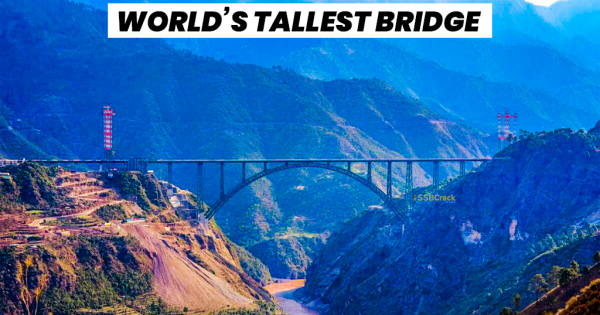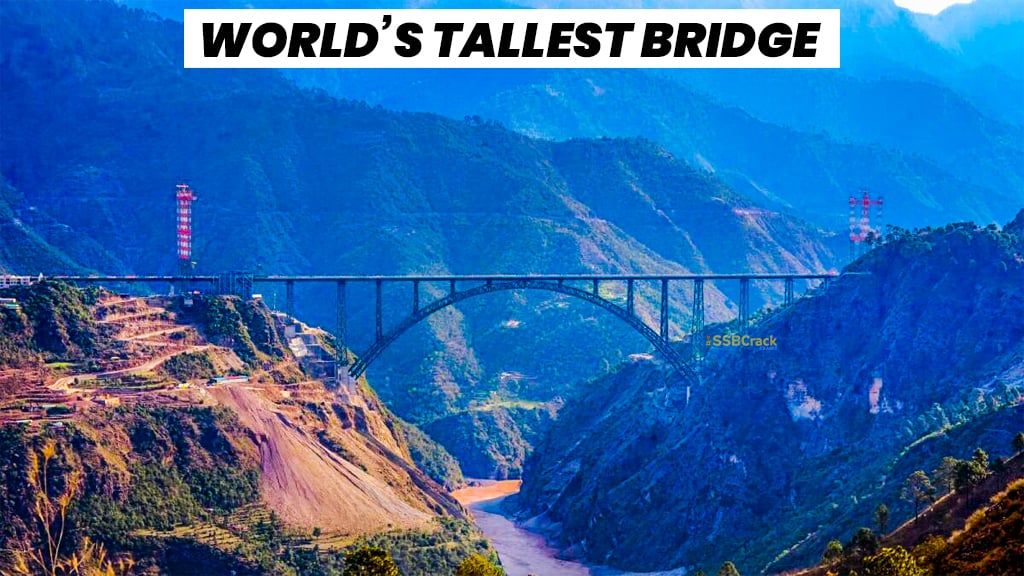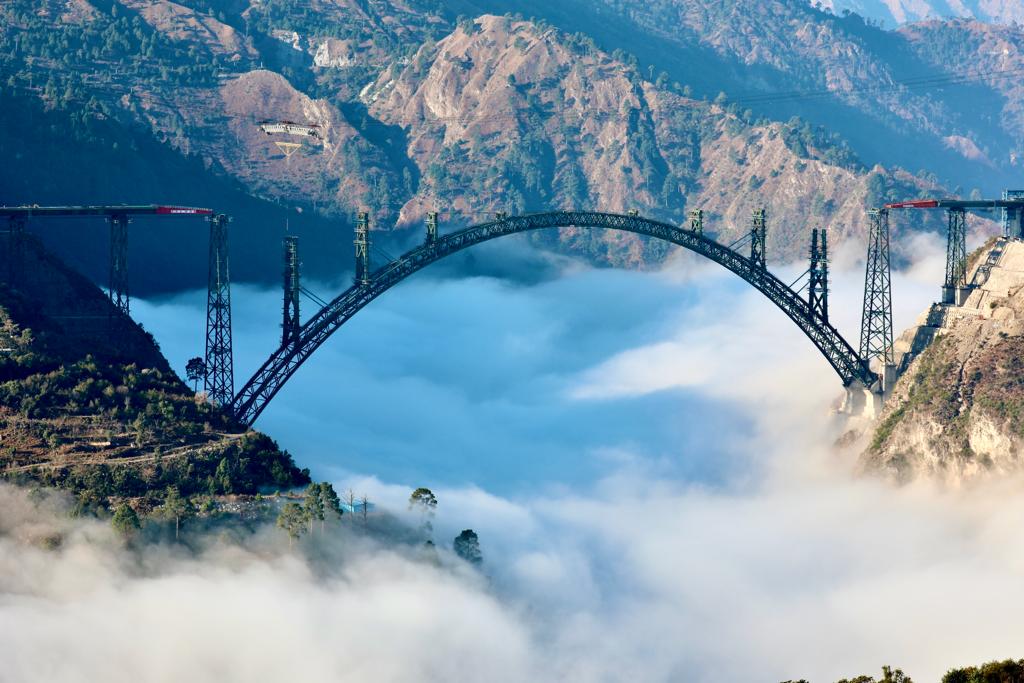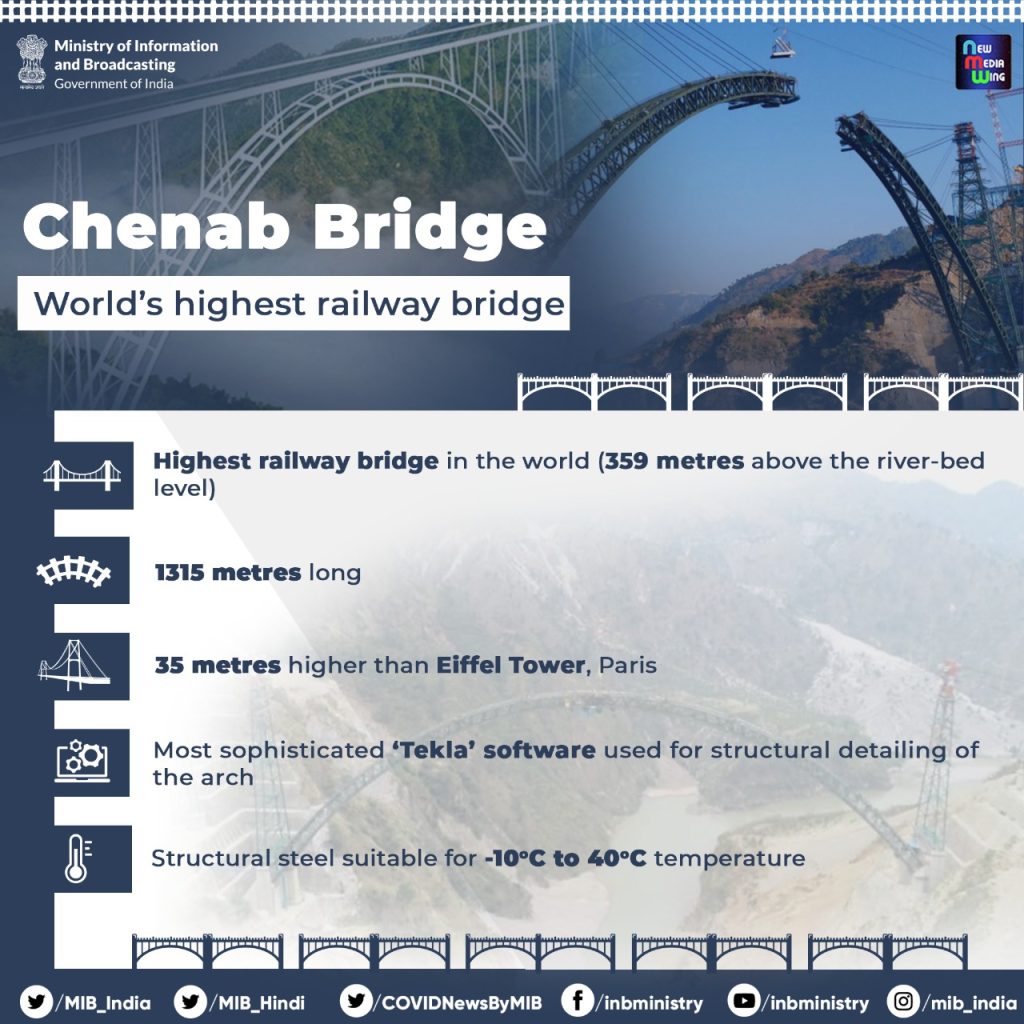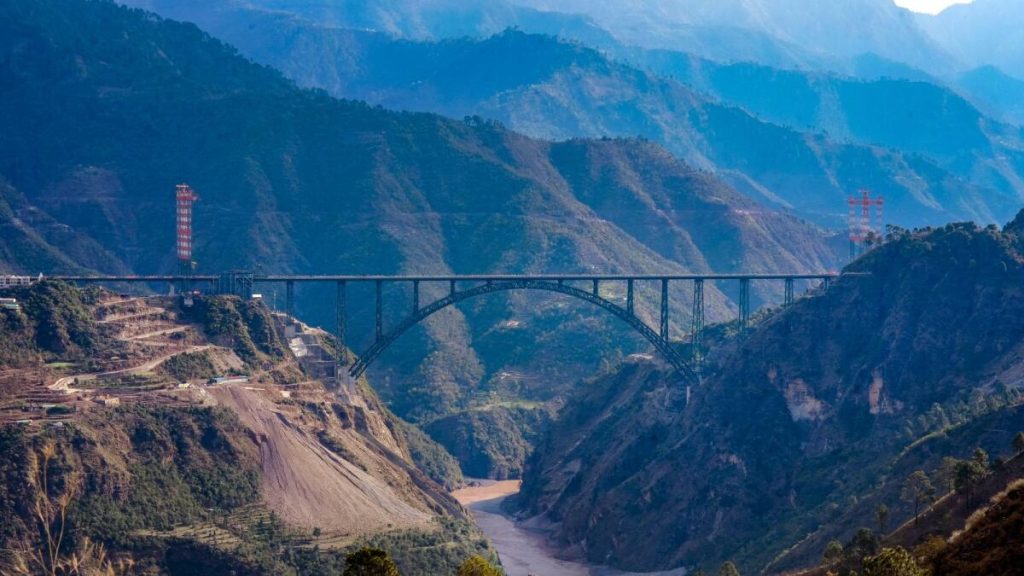India has Constructed the World’s tallest Bridge in Jammu and Kashmir region. The Chenab Rail Bridge built 359 meters (109 feet) above the Chenab River in Jammu and Kashmir, is 35 meters taller than the Eiffel Tower.
World’s Tallest Railway Bridge
According to the Ministry of Railways, the bridge would be ready for the public by the end of December 2023 or early January 2024. The 1,315-metre-long bridge is part of a larger project to connect the Kashmir valley to the Indian Railway network. In addition to the Chenab Rail Bridge, the Udhampur-Srinagar-Baramulla Rail Link (USBRL) project would contain the country’s longest transportation tunnel and Indian Railways’ first cable bridge.
The bridge will be allowing all-weather rail communication between Kashmir Valley and the rest of India and will considerably strengthen the region’s industrial and agricultural sectors. Previously, the only land route connecting Kashmir with the rest of the country was the winding 300-kilometer (185-mile) Srinagar-Jammu national highway, which is frequently the scene of car accidents and closes for part of the winter.
According to a ministry statement, the Arch closure was one of the most difficult aspects of the bridge over Chenab, and its completion is a significant step towards completing the 111-kilometer-long curving route from Katra to Banihal. It is undoubtedly the most difficult civil engineering task that any railway project in India has faced in modern history. The final 5.6-meter piece of metal was installed at the highest point and connected the two arms of the arch that are currently stretching towards each other from both banks of the river. According to the government, this finished the shape of the arch, which would then loom over the dangerous Chenab, which flows 359 meters below.
The ministry stated that the bridge was developed for blast load in conjunction with the DRDO for the first time in India and can survive high wind speeds of up to 266 kilometers per hour as well as earthquake forces of the greatest intensity zone-V in India. It further stated that the bridge will remain functioning at a reduced speed of 30 km/h even after one pier/trestle is removed.
According to the ministry, a Phased Array Ultrasonic Testing machine used for testing welds and a NABL-accredited lab were established at the site for weld testing for the first time on Indian Railways, and 584km of welding was done to join the different parts of the structure, which is equivalent to the distance between Jammu Tawi and New Delhi. The pylon of the cable crane at Srinagar End is 127m tall, far taller than the pylon of the Qutub Minar, which is 72m tall.
To crack the SSB Interview and join the Indian Army as an Officer, You can join our SSB interview live classes batch and we recommend you to Enroll SSB INTERVIEW ONLINE COURSE. Trusted by thousands of defence aspirants.
